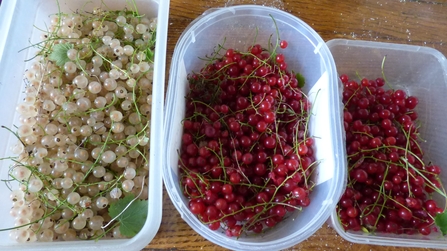As the sun sets on summer and our garden plants swap frenetic growth for seed production and a winter rest, I’ve been out in the fruit cage catching up on cutting and tying in raspberry canes. The old ones can be used to help other plants and wildlife around the garden.
As usual, I’ve left removing the old raspberry canes much later than intended. To my surprise, there were still a few soft, chubby late raspberries on the younger, more robust plants, despite earlier torrential downpours with strong winds.
I don’t think they were an autumn-fruiting variety. Instead, it was probably more to do with a late burst of glorious hot sunshine following the colder weather. There were some small but tasty raspberries in the local woods too, their floppy thornless stems holding their own amongst tougher, more vigorous brambles. Maybe others hadn’t noticed these humble little fruit amongst the tart unripe red blackberries and their juicy black ripe companions.


